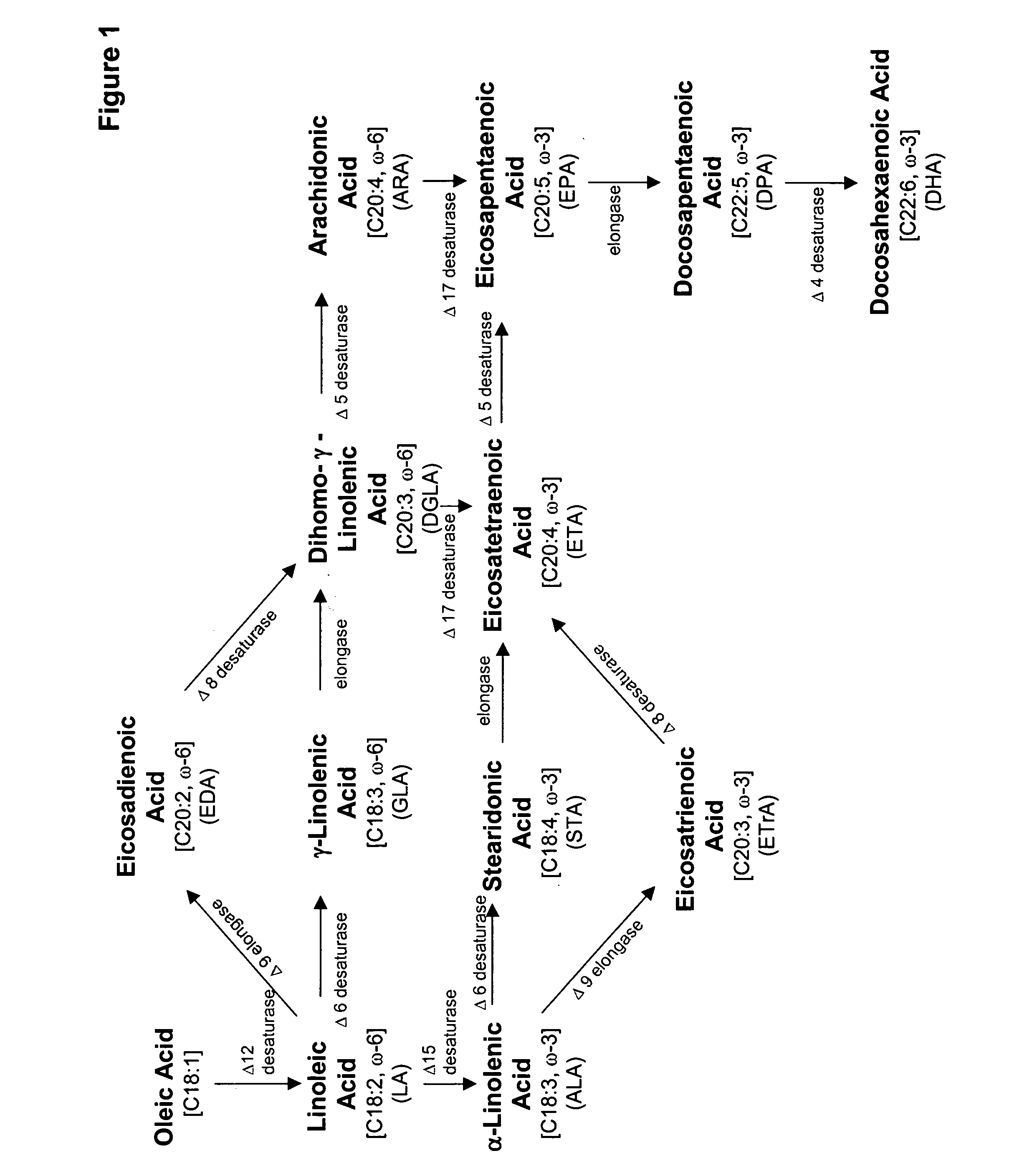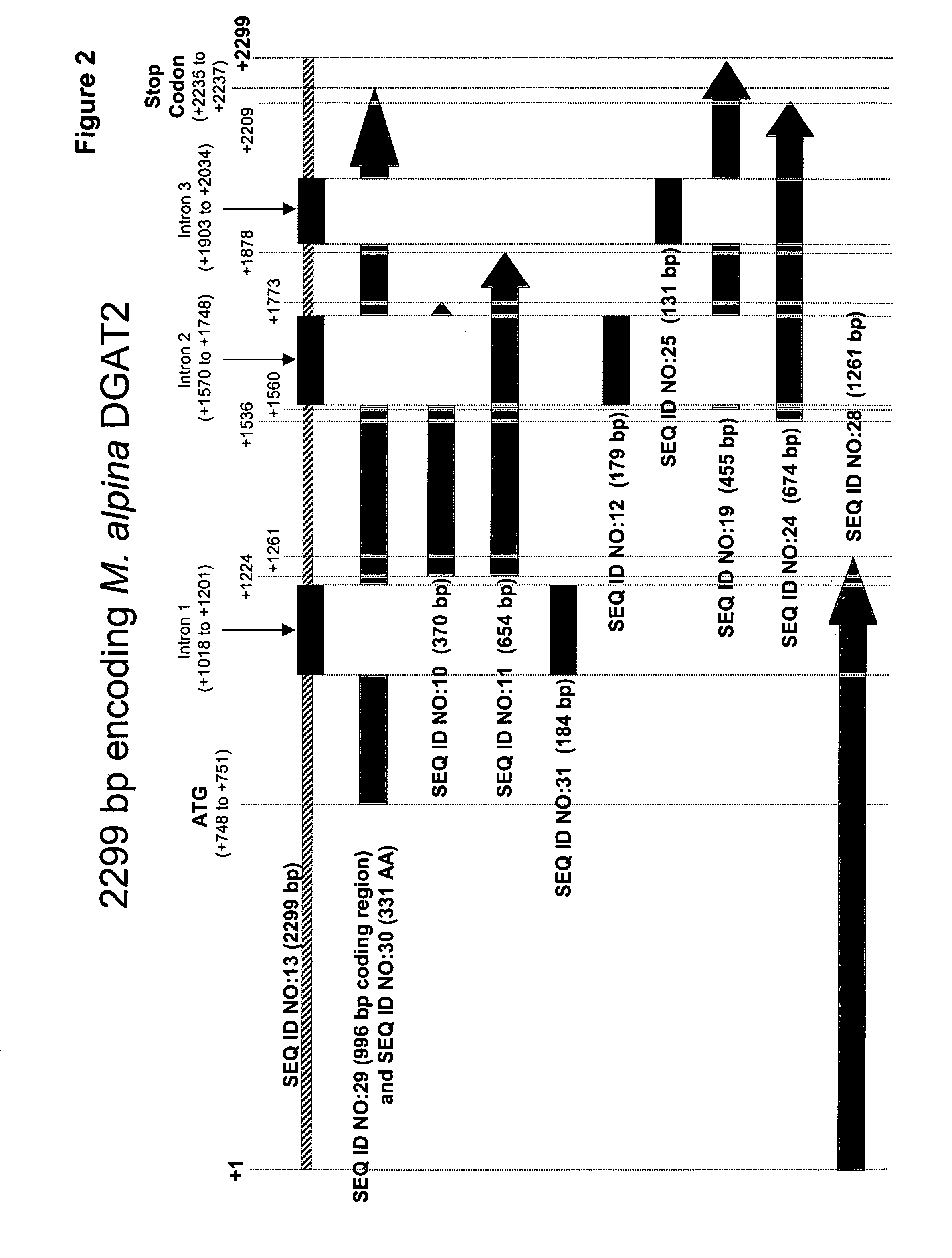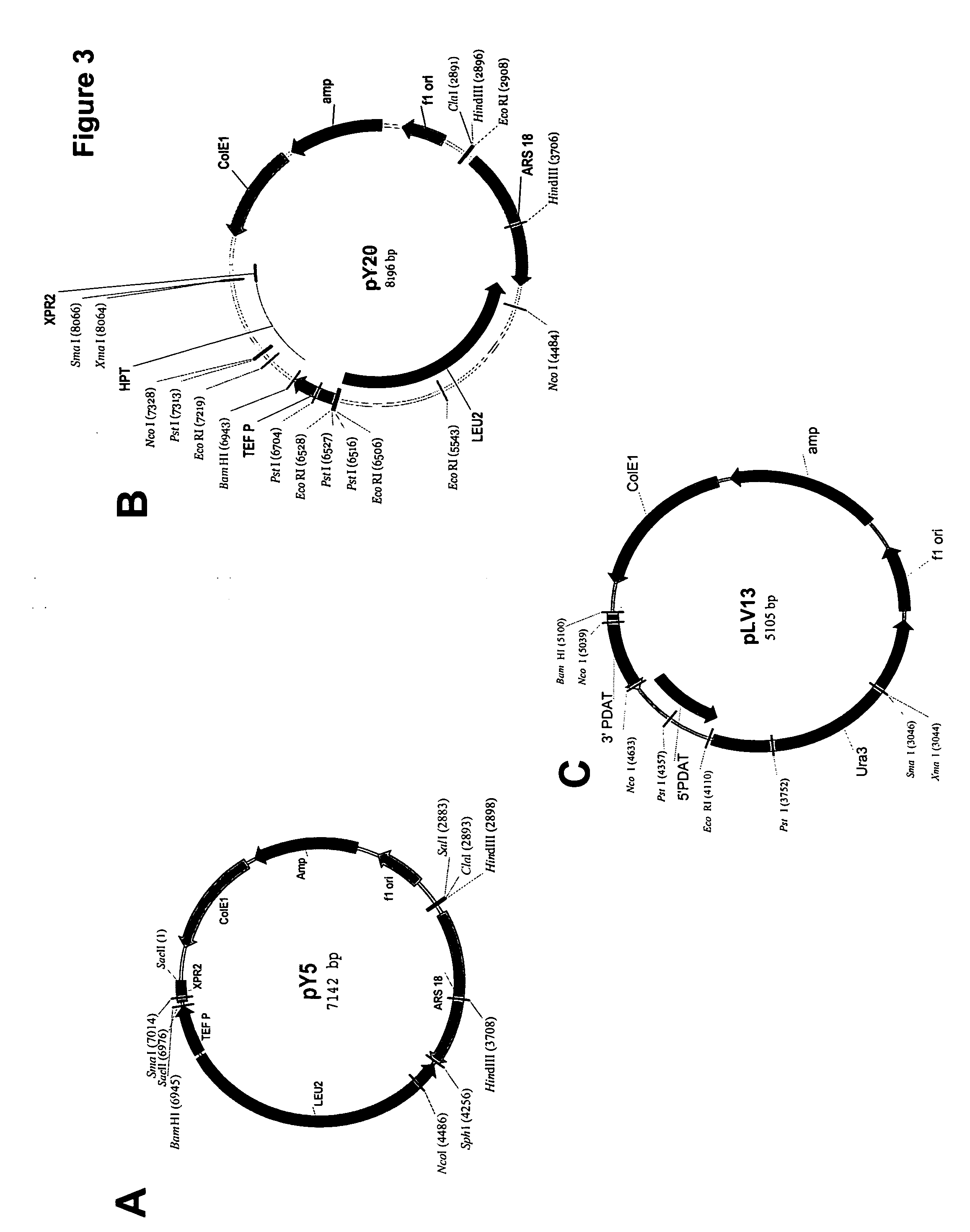Acyltransferase regulation to increase the percent of polyunsaturated fatty acids in total lipids and oils of oleaginous organisms
- Summary
- Abstract
- Description
- Claims
- Application Information
AI Technical Summary
Benefits of technology
Problems solved by technology
Method used
Image
Examples
example 1
Preparation of Mortierella alpina Genomic DNA and cDNA
[0243] The present Example describes the preparation of genomic DNA and cDNA from Mortierella alpina (ATCC #16266).
Preparation of Genomic DNA from Mortierella alpina
[0244] Genomic DNA was isolated from Mortierella alpina (ATCC #16266) using a QiaPrep Spin Miniprep Kit (Qiagen, Catalog #627106). Cells grown on a YPD agar plate (2% Bacto-yeast extract, 3% Bactor-peptone, 2% glucose, 2.5% bacto-agar) were scraped off and resuspended in 1.2 mL of kit buffer P1. The resuspended cells were placed in two 2.0 mL screw cap tubes, each containing 0.6 mL glass beads (0.5 mm diameter). The cells were homogenized at the HOMOGENIZE setting on a Biospec (Bartlesville, Okla.) mini bead beater for 2 min. The tubes were then centrifuged at 14,000 rpm in an Eppendorf microfuge for 2 min. The supernatant (0.75 mL) was transferred to three 1.5 mL microfuge tubes. Equal volumes of kit buffer P2 were added to each tube. After mixing the tubes by inv...
example 2
Cloning of a Partial Putative DGAT2 Sequence from Mortierella alpina by PCR using Degenerate PCR Primers
[0251] PCR amplifications were performed using either M. alpina genomic DNA or cDNA as template and several sets of degenerate primers (see Table 7 below) designed to encode conserved amino acid sequences among different known DGAT2s (i.e., GenBank Accession Nos. NC—001147 [Saccharomyces cerevisiae] and AF391089 and AF391090 [Mortierella ramanniana]). The best results were obtained with degenerate primers MDGAT-FN1 and MDGAT-RN1.
TABLE 7Degenerate Primers Used For Amplification Of A Partial Putative DGAT2DegenerateCorrespondingPrimerNucleotideAmino AcidSetDescriptionSequenceSequenceMDGAT-(16) 20-mers5′-GAACTACATCTTYG(SEQ ID NO:4)NYIFGYH(SEQ ID NO:5)FN1GNTAYCA-3′MDGAT-(32) 20-mers5′-TACAGCTCRTTYTC(SEQ ID NO:6)Complement of(SEQ ID NO:7)RN1NCCRAA-3′FGENELYMDGAT-(32) 20-mers5′-CCAAAGTCRTARTT(SEQ ID NO:8)Complement ofRN2RAANAC-3′VFNYDFG(SEQ ID NO:9)
[Note: Abbreviations are standard f...
example 3
Isolation of the Full-Length DGAT2 Sequence from Mortierella alpina
[0255] Based on the sequence of the 370 bp fragment, the 5′ and 3′ end regions of the M. alpina DGAT2 were cloned using genome walking techniques. This enabled assembly of a contig, corresponding to the −747 bp to +1552 bp region of the M. alpina DGAT2 (SEQ ID NO:13). This contig included the entire coding region of DGAT2 and three introns.
InVitrogen's 3′-end RACE Protocol
[0256] 3′-end RACE was carried out using the InVitrogen 3′-end RACE kit, following the manufacturer's protocol. Briefly, 90 ng of M. alpina polyA(+)RNA in 11 μl of water was mixed with 1 μl of 10 μM Adaptor primer (“AP”; SEQ ID NO:14) solution. The mixture was heated at 70° C. for 10 min and cooled on ice for 2 min. To this, 2 μl 10×PCR buffer, 2 μl 25 mM MgCl2, 2 μl 0.1 M DTT, and 1 μl of 10 mM dNTP mix were added (from the kit). The reaction mixture was heated to 42° C. for 3 min and then 1 μl of Superscript II reverse transcriptase was added. ...
PUM
| Property | Measurement | Unit |
|---|---|---|
| Volume | aaaaa | aaaaa |
| Volume | aaaaa | aaaaa |
| Volume | aaaaa | aaaaa |
Abstract
Description
Claims
Application Information
 Login to View More
Login to View More - R&D
- Intellectual Property
- Life Sciences
- Materials
- Tech Scout
- Unparalleled Data Quality
- Higher Quality Content
- 60% Fewer Hallucinations
Browse by: Latest US Patents, China's latest patents, Technical Efficacy Thesaurus, Application Domain, Technology Topic, Popular Technical Reports.
© 2025 PatSnap. All rights reserved.Legal|Privacy policy|Modern Slavery Act Transparency Statement|Sitemap|About US| Contact US: help@patsnap.com



